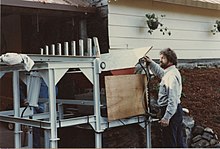
Pinot noir, also known as Pinot nero, is a red-wine grape variety of the species Vitis vinifera. The name also refers to wines created predominantly from Pinot noir grapes. The name is derived from the French words for pine and black. The word pine alludes to the grape variety having tightly clustered, pinecone—shaped bunches of fruit.

The Eyrie Vineyards is an American winery in Oregon that consists of 60 acres (24 ha) in five different vineyards in the Dundee Hills AVA of the Willamette Valley. In 1965, against the advice of his viticultural professors at the University of California, Davis, David Lett moved to Oregon to plant Pinot noir in the Willamette Valley. David and Diana Lett produced the first Pinot noir in the Willamette Valley, and the first Pinot gris in the United States. Their first vintage was in 1970.

New Zealand wine is produced in several of its distinct winegrowing regions. As an island country in the South Pacific Ocean, New Zealand has a largely maritime climate, although its elongated geography produces considerable regional variation from north to south. Like many other New World wines, New Zealand wine is usually produced and labelled as single varietal wines, or if blended, winemakers list the varietal components on the label. New Zealand is best known for its Marlborough Sauvignon Blanc, and more recently its dense, concentrated Pinot Noir from Marlborough, Martinborough and Central Otago.
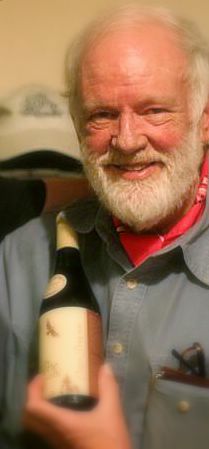
David Lett was the founder and winemaker for The Eyrie Vineyards in the U.S. state of Oregon. He was a pioneer in the Oregon wine industry.
The state of Oregon in the United States has established an international reputation for its production of wine, ranking fourth in the country behind California, Washington, and New York. Oregon has several different growing regions within the state's borders that are well-suited to the cultivation of grapes; additional regions straddle the border between Oregon and the states of Washington and Idaho. Wine making dates back to pioneer times in the 1840s, with commercial production beginning in the 1960s.
The history of Oregon wine production stretches back to before the state was incorporated. Settlers to the Oregon Territory planted grapes as early as the 1840s, however the production of wine has only been a significant industry in Oregon since the 1960s. Oregon wines first achieved significant critical notice in the late 1970s; in 2005, the industry sold 1.6 million cases of Oregon vintages with a retail value of US$184.7 million. In 2015, there were 702 wineries and 28,034 acres of vitis vinifera planted.

Willamette Valley is an American Viticultural Area (AVA) which lies in the Willamette Valley of Oregon. The AVA is the wine growing region which encompasses the drainage basin of the Willamette River. It stretches from the Columbia River in the north to just south of Eugene in the south, where the Willamette Valley ends; and from the Oregon Coast Range in the west to the Cascade Mountains in the east. At 5,360 square miles, it is the largest AVA in the state, and contains most of the state's wineries; approximately 908 as of 2021.

The Dundee Hills AVA is an American Viticultural Area located in Yamhill County, Oregon. It is entirely contained within the Willamette Valley AVA, and is approximately 28 miles (45 km) southwest of Portland, near the towns of Dundee and Dayton. The area is 6,940 acres (2,809 ha) in total size, with 1,300 acres (526 ha) planted with grapes. The Dundee Hills are a north-south oriented line of hills on the western side of the Willamette River valley. The soil is red in color, rich in iron, relatively infertile, making it suitable for grape cultivation. The region gets 30 inches (76 cm) to 45 inches (114 cm) of rainfall per year. The Chehalem Mountains to the north protect the region from the cool breezes that enter Willamette Valley from the Columbia Gorge. Over 25 wineries and independent vineyards in this region produce over 44,000 cases of wine.
Fiddlehead Cellars is a winery based in Lompoc, California specializing in Sauvignon blanc and Pinot noir, producing an average of 5,000 cases of wine yearly. It was established by Kathy Joseph in 1989. Fiddlehead uses grapes from the Santa Ynez Valley AVA of Santa Barbara County, specifically the Sta. Rita Hills AVA for Pinot noir, and Oregon's Willamette Valley AVA. Winemaker Joseph has a graduate degree in Viticulture and Enology from University of California, Davis. Fiddlehead Cellars is a member of the Sta. Rita Hills Winegrowers Alliance and the Santa Barbara County Vintners' Association.

The Russian River Valley AVA is an American Viticultural Area (AVA) in Sonoma County, California. Centered on the Russian River, the Russian River Valley AVA accounts for about one-sixth of the total planted vineyard acreage in Sonoma County. The appellation was granted AVA status in 1983 and enlarged in 2005. The area generally lies between Sebastopol and Santa Rosa in the south, and Forestville and Healdsburg in the north. The Russian River Valley has a characteristically cool climate, heavily affected by fog generated by the valley's proximity to the Pacific Ocean. The area is known for its success with cool climate varietals, notably Pinot noir and Chardonnay.

The Eola-Amity Hills AVA is an American Viticultural Area located in Polk County and Yamhill County, Oregon. It is entirely contained within the Willamette Valley AVA, and stretches from the city of Amity in the north to Salem in the south. The Eola and Amity hills cover an area west of the Willamette River approximately 15 miles (24 km) long by 6 miles (10 km) wide. The Eola-Amity Hills area benefits from steady winds off the Pacific Ocean that reach the Willamette Valley through the Van Duzer Corridor, a gap in the Oregon Coast Range, moderating the summer temperatures. The Eola Hills were named after the community of Eola, whose name was derived from Aeolus, the Greek god of the winds.
Foris Vineyards Winery is an American winery located near Cave Junction, Oregon in the Illinois Valley region of the Rogue Valley AVA of Southern Oregon. As one of Oregon's pioneering grape growers, Ted Gerber planted his first vineyard in 1974. For 15 years, Gerber provided fruit to other winemakers, until 1986 when the winery was founded by Ted and Meri Gerber and the Foris label was launched.

Cristom Vineyards is an Oregon wine producer and vineyard based near Salem, U.S. It is in the Eola-Amity Hills wine region within the Willamette Valley AVA, about 6 miles (9.7 km) northwest of Keizer.
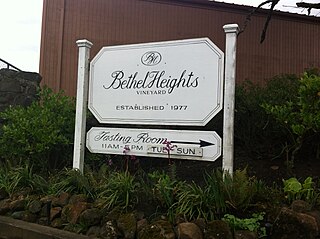
Bethel Heights Vineyard is an Oregon winery in the Eola-Amity Hills AVA of the Willamette Valley. Founded in 1977 by twin brothers Ted and Terry Casteel, their wives Pat Dudley and Marilyn Webb, and Pat's sister Barbara Dudley, the vineyard was one of the earliest plantings in the Eola-Amity Hills region. A winery soon followed, with the first estate wines produced in 1984. Bethel Heights specializes in Pinot noir, offering several individual block and vineyard designated bottlings, but also produces wines made from Chardonnay, Pinot gris, Pinot blanc, Riesling, Grüner Veltliner, and Gewürztraminer.

Sokol Blosser Winery is a vineyard, tasting room and winery facility located northeast of Dayton, Oregon in the Red Hills of Dundee in Yamhill County. It was founded by Bill Blosser and Susan Sokol Blosser in 1971 in what is now known as the Dundee Hills AVA. Sokol Blosser Winery is family owned and operated by second-generation President Alex Sokol Blosser, and is the 6th largest wine producer in Oregon. Sokol Blosser is considered to be “synonymous with sustainability,” and produces Pinot Noir, Pinot Gris, Chardonnay, Sauvignon Blanc, Mueller-Thurgau, Pinot Blanc, and proprietary blends Evolution White, Red, Pinot Noir, Sauvignon Blanc and White Riesling and a range of other Evolution wines, and small quantities of single block Pinot Noirs, Rosé of Pinot Noir, White Riesling dessert wine, and sparkling wine. In 2023 the Winery introduced red and white Aperitif Wines, produced from a blend of alcohol distilled from their grapes and a blend of herbs.
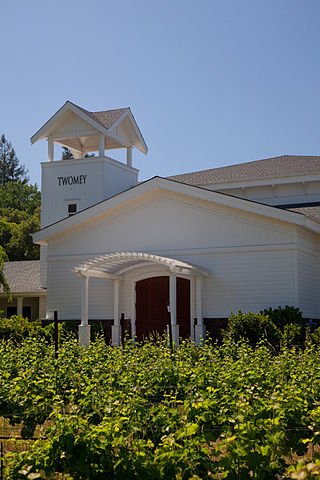
Twomey Cellars is a California winery. It was established in 1999 by the Duncan Family, who have operated the successful Silver Oak Cellars in California since 1972. The Duncan Family started Twomey Cellars to pursue varietals other than Cabernet Sauvignon. Twomey has three wineries: one in Calistoga in the Napa Valley; one in Healdsburg in the Russian River Valley; one in Philo in Anderson Valley, and produces mainly Pinot noir and Sauvignon blanc. Twomey’s Sauvignon blanc is a blend of Sauvignon blanc grapes from their estate vineyards at their wineries in Napa Valley, Anderson Valley, and Russian River Valley.
Zelma R. Long is an American enologist and vintner. She is considered to be one of the female pioneers in California wine, and was the first woman to assume senior management of a Californian winery, Simi Winery, of which she was president from 1989 to 1996. Long founded and was the first president of the American Vineyard Foundation to help finance research in enology and viticulture and also founded the American Viticulture and Enology Research Network (AVERN). She is the co-owner of Long Vineyards in St. Helena, California, and the Vilafonte Wine Estate in South Africa. Long has particularly been active in research into viticulture in Washington state.
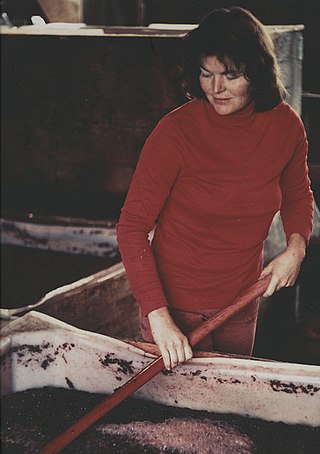
Nancy Ponzi is an American vineyard owner and winemaker. She is a pioneer of the Oregon wine industry and the Oregon brewing industry, and the founder of Ponzi Vineyards, one of the Willamette Valley's founding wineries. She and her husband Dick Ponzi also established Oregon's first craft brewery, Bridgeport Brewing Company.
Laurelwood District is an American Viticultural Area (AVA) located west of the city of Portland and lies entirely within the northern end of Willamette Valley AVA with the Chehalem Mountains AVA covering its northern slopes including the towns of Cornelius, Scholls and Sherwood in Washington County. The district was established on May 13, 2020, by the Alcohol and Tobacco Tax and Trade Bureau (TTB) after reviewing the petition submitted by Luisa Ponzi, president of Ponzi Vineyards, Maria Ponzi, winemaker of Ponzi Vineyards, and Kevin Johnson, winemaker of Dion Vineyards, on behalf of themselves and other local grape growers and vintners, proposing the establishment of the “Laurelwood” AVA. However, at the request of TTB, the petitioners agreed to add the word “District” to the proposed name, in order to avoid a potential impact on current label holders who are using “Laurelwood” as a brand name or fanciful name on their wine labels. Its coverage is approximately 33,600 acres (53 sq mi) and contains 25 wineries and approximately 70 commercially-producing vineyards that plant approximately 975 acres (395 ha). The distinguishing feature of the Laurelwood District is the predominance of the Laurelwood soil that predominates in the area. The district contains the highest concentration of the namesake soil in Oregon.
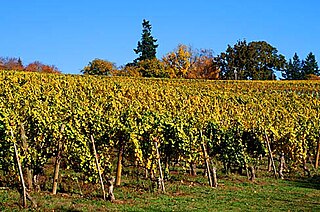
Tualatin Hills is an American Viticultural Area (AVA) located due west of Portland and just east from the Oregon Coast Range in the upland hills of the Tualatin River watershed and encompasses elevations between 200 and 1,000 feet. It was established on May 13, 2020 by the Alcohol and Tobacco Tax and Trade Bureau (TTB) after reviewing the petition from Rudolf Marchesi, president of Montinore Estate, Alfredo Apolloni, owner and winemaker of Apolloni Vineyards, and Mike Kuenz, general manager of David Hill Vineyard and Winery, on behalf of themselves and other local grape growers and vintners, proposing the establishment of the "Tualatin Hills" viticultural area in portions of Multnomah and Washington Counties. It lies entirely within the northernmost location of the Willamette Valley AVA in and around towns like Gaston, Forest Grove, Sherwood and Cornelius. To the south and southeast are the Chehalem Mountains with elevations of over 1,000 feet (300 m) and considered to be a separate, distinct landform from the uplands within Tualatin Hills. The region stretches over approximately 144,000 acres (225 sq mi) and contains 21 wineries with 33 commercially-producing vineyards that covers approximately 860.5 acres (348 ha). The distinguishing features of Tualatin Hills are its soils, elevation, and climate.



